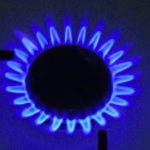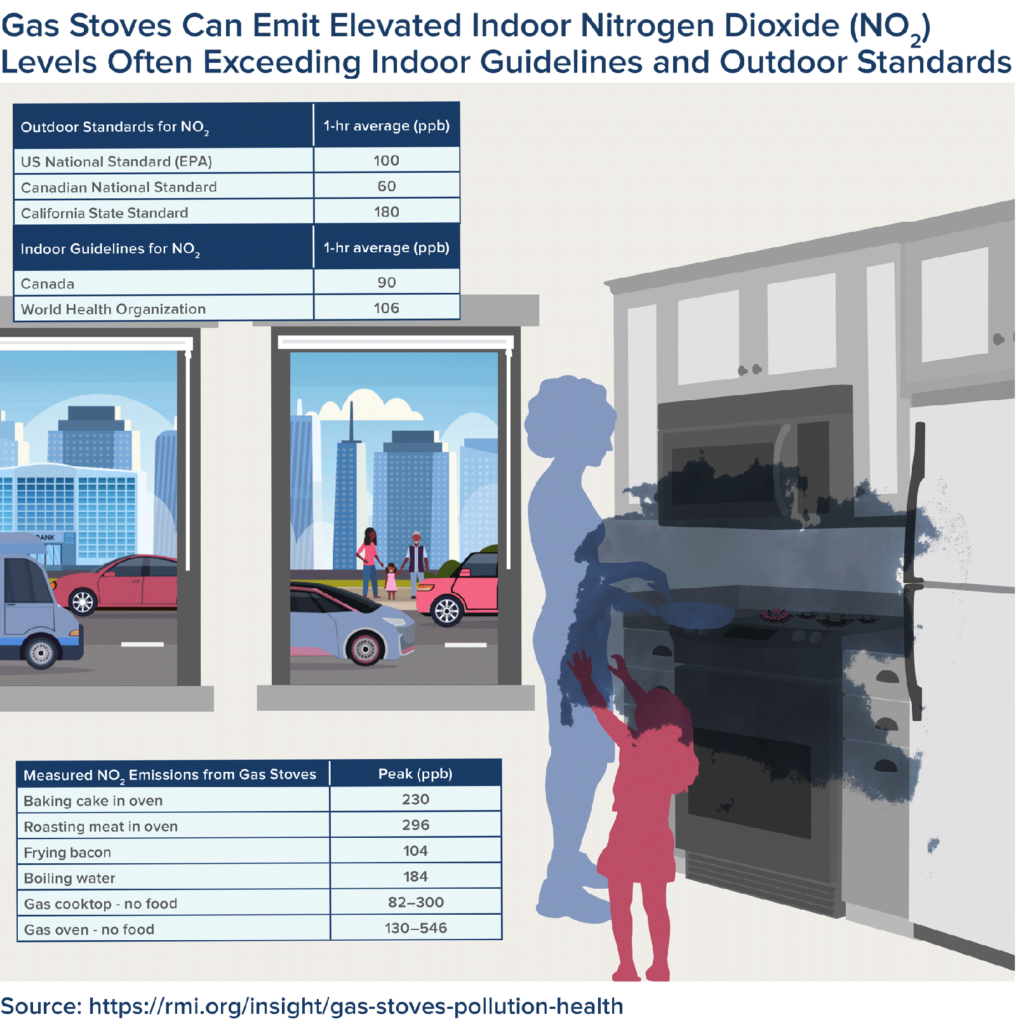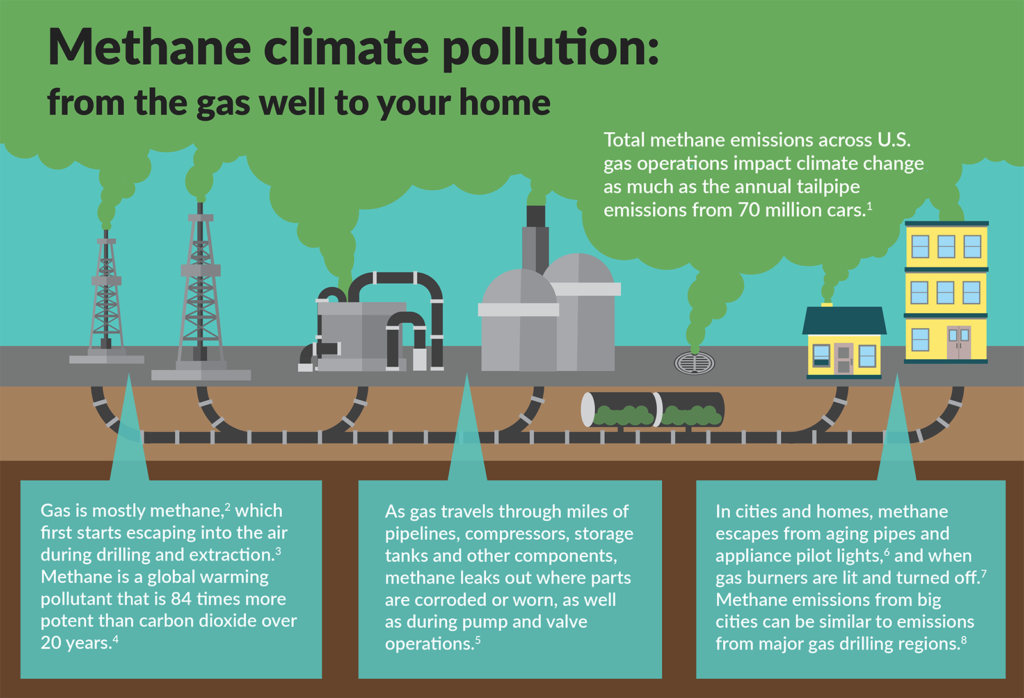
By Adrienne Allen
Your Sunday night supper may be making you sick. Most of us heat our homes and cook our food with natural gas. Natural gas has long been promoted as the “clean” bridge from coal and oil to green energy. This year, a Harvard study on climate and air quality found that fossil fuel-related air pollution, including pollution from natural gas, kills one in five people worldwide. In the United States, natural gas use has increased 400% since the 1950s, with unfortunate health and environmental outcomes.
We often think about air pollution as an outdoor threat—like the wildfire smoky haze that descended on us this summer. Yet cooking indoors with gas can worsen indoor air quality, as chemicals become concentrated in our home, causing illness and even premature death. How does this occur?
Burned gas from stoves, furnaces, and water heaters releases nitrogen dioxide, volatile organic compounds, and small particles. All of these chemicals increase rates of asthma, chronic obstructive pulmonary disease (COPD) , heart attack, stroke, and many other illnesses outlined in the table on page one. Two Boston area studies have shown that even short-term exposure to these fumes has been associated with illness and premature death.
Health Effects of Chemicals Contained in Gas
|
System |
Disease |
Culprit |
|
Pulmonary |
Airway inflammation Asthma, asthma attacks COPD exacerbation Cough Pulmonary inflammation Wheeze |
NO2 Ozone Particulate matter |
|
Cardiovascular |
Cardiovascular disease Congestive heart failure Stroke |
NO2 Ozone Particulate matter |
|
Hematologic |
Blood disorders |
Toluene Xylene |
|
Neurologic |
Parkinson’s disease General nervous system disorders |
NO2 Toluene Xylene |
|
Obstetrical |
Preterm birth Low birthweight |
NO2 |
|
Oncologic |
Cancer |
Benzene |
|
Other |
Premature death |
NO2 Ozone Particulate matter |
Of these chemicals the most concerning is nitrogen dioxide or NO2. v is formed when gas is burned. NO2 is one of six air pollutants that have national standards for outdoor air. The United States’ one-hour standard for NO2is 100 parts per billion (ppb). Canada’s standard is lower, at 60 ppb. For indoors, the WHO recommends less than 106 ppb, and Canada suggests 90 ppb; the US does not set indoor NO2 guidelines. The Rocky Mountain Institute notes that using gas stoves often produces NO2 concentrations that exceed these limits.
Children are particularly at risk for NO2-related illness due to higher breathing rates and physical activity, higher lung-surface-area to body-surface-area ratios, and immature immune systems. Children living in homes with gas stoves are 42% more likely to have asthma. The Massachusetts Medical Society (MMS) formally acknowledges that natural gas stoves raise asthma rates and advises that these risks can be eliminated by using induction electric stoves and somewhat mitigated by using ventilation.
Unfortunately, gas stoves emit dangerous chemicals even when the stoves are not in use. These chemicals include lead, chromium, benzene, hexane, formaldehyde, toluene, xylene, and NO2. All of these harmful chemicals are increasing inside homes—and throughout the environment via increased use of gas and by gas fracking operations.
The American Medical Association (AMA) and the MMS both recognize the human health impacts of natural gas and natural-gas infrastructure (like the compressor stations and leaky pipelines mentioned in the accompanying article) and recommend ongoing health assessments for any new infrastructure proposals. The MMS warns of the health-related effects of any smog and particulate-matter-producing devices, including leaf blowers, but that is a conversation for another article (see”Leaf Blowers Damage Belmont’s Environment,” page 14 in this issue).
Ethics of Gas
Most of the gas flowing through our pipelines is fracked gas. The ethics of using this fracked gas is becoming more and more fraught. Communities near fracking sites have suffered numerous adverse health effects including cancer, preterm birth, respiratory disease, and cardiovascular illness.
Fracking contaminates groundwater and worsens noise and air pollution. The transporting of the gas has led to environmental harm both along transport corridors and surrounding gas-compressor stations. Compressor stations are typically situated in environmental justice neighborhoods—which already have high rates of cancer and premature deaths. For example, the Weymouth compressor station last year “vented” extra gas into neighborhoods that can least afford to breathe it in. There is also the risk of exposure, which our area acutely felt in 2018 with the explosions that struck Lawrence and Andover a few years ago.
Climate Change and Natural Gas
The multiple extreme weather and wildfire disasters of this summer remind us that there is no time to waste in transitioning away from natural gas. The burning of natural gas creates carbon emissions. Worse yet, extracting natural gas releases methane, an even more potent greenhouse gas that worsens warming. Warm air also holds more air pollution, compounding all of the complications noted above.
What to Do
The good news is that we have the building technology to make our homes healthier. By moving away from gas and to all-electric homes, we can reduce carbon pollution and air pollution and make our homes safer.
The most immediate health benefits Massachusetts will see from moving to cold-climate air-source heat pumps and induction stoves will be improved air quality. Belmont Light is committed to clean energy, and by 2019, 50% of Belmont’s electricity was clean, increasing to 66% clean in 2020. Belmont Light also has multiple rebates to help households switch to healthier products like induction stoves and heat pumps.
Belmont has a climate action plan that outlines how we can electrify our homes to slow climate change. That same electrification will make us healthier today. Cutting out gas will improve air quality for everyone and help us all breathe a little easier.
Adrienne Allen, MD, MPH, is a member of the Belmont Board of Health and Senior Medical Director of Quality, Safety, and Sustainability at the North Shore Physicians Group.




Sorry, the comment form is closed at this time.